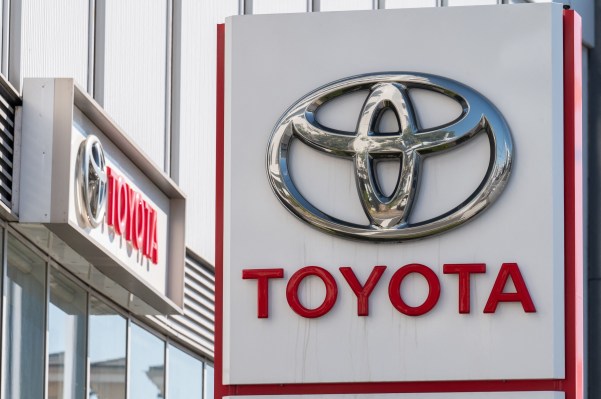It’s no secret that Toyota has struggled with the transition to EVs.
The company has spent the last decade trying to throw cold water on battery-powered vehicles. It has actively lobbied against them, invested untold sums into hydrogen fuel cell vehicles, and pushed incremental advances in fuel economy by finally, finally filling its fleet with hybrids, a 30-year-old technology.
How has that been going? Not great.
More recently, though, Toyota has vocally embraced battery electric vehicles, saying that it will launch 30 EVs by 2030. It’s going to spend $48 million to build a battery research lab in the U.S., and it’s investing nearly $6 billion to build a battery factory in North Carolina. Much of that progress has occurred this year after longtime president Akio Toyoda handed the reins over to Koji Sato, the former head of Lexus, the automaker’s luxury division.
Still, Toyota’s EV progress remains nascent. And a recent announcement about a manufacturing partner suggests that the company is still feeling its way forward.
Toyota’s first model, the awkwardly named bZ4x, got off to a wobbly start: Every vehicle was recalled because the wheels were prone to falling off. Putting that aside, reviews of the crossover have been, well, fine. Its range is mediocre at best and the charging speed is OK, but reviewers say the rest of the car is agreeable enough.
More telling is the fact that Toyota is already hawking its next generation of EVs. Many of these are quickly assembled concepts, while others are technology demonstrations that claim outlandish specifications, like a range of 750 miles and a charging time of only 10 minutes thanks to solid-state batteries.
The battery type gets its advantages from a solid electrolyte. Electrolytes in today’s lithium-ion batteries are liquids, and they tend to be pretty flammable. What’s more, they can be easily pierced by spiky growths, known as dendrites, on the anode (the negative terminal). Dendrites are more likely to form because of repeated or excessively rapid fast-charging, and if they bridge the gap between anode and cathode, the cell short-circuits and can cause a fire.
Because of those concerns and others, today’s lithium-ion batteries have relatively limited charging speeds.
Solid-state batteries have the potential to unlock significant gains in energy density, charging speed and safety, but they’re incredibly hard to produce. Applying the electrolyte to the anode consistently during production, and ensuring it remains that way during use, is a tall order. And it’s compounded by the fact that manufacturing techniques generally have to work on existing equipment with few modifications. After all, automakers are spending billions to outfit those factories, and they’re not about to throw all that machinery out in a few years.
Everyone in the automotive industry is racing to get solid-state batteries to market at a reasonable cost. Most are confident that they’ll be able to do that later in the decade. Toyota isn’t any different, saying that its first solid-state models will be out around 2027–2028, with mass production to follow (which probably means it’ll be 2030 before anyone can really buy one).
To get there, Toyota has been working with Panasonic on the technology. Given Panasonic’s long history of making lithium-ion batteries, notably with Tesla, that shouldn’t come as a surprise.
What is more surprising is this week’s news that Toyota would be working to develop sulfide solid electrolyte production technologies with Idemitsu Kosan, a Japanese oil and petrochemical company that has also been working with the chemistry. The oil refiner has said that it intends to spend $5 billion over the next three years to build a business to better fit the global energy transition.
The question, of course, is whether the duo can produce the electrolyte in sufficient quantity and integrate it into existing battery lines. Toyota might have an advantage here: It has practically zero lithium-ion infrastructure today, so it can build its plants with a solid-state electrolyte in mind.
Still, it’s unclear whether the choice of a Idemitsu Kosan is the right one. While the company is embracing the energy transition more than, say, ExxonMobil, the lion’s share of Idemitsu Kosan’s revenue still comes from oil and petrochemical operations.
Partnering with a company that’s sharply focused on solid-state batteries might be a better bet, especially since there are others like Solid Power also working on sulfide solid electrolytes.
But Toyota respectfully disagrees. “Having explored various materials, we determined that the Idemitsu/Toyota solid electrolyte offers a good balance of factors such as ease of production and performance in all-solid-state batteries, making it suitable for battery mass production,” Toyota spokesperson Rick Bourgoise told TechCrunch+.
It’s also possible that the company’s business culture would be more comfortable working with another Nikkei 225 company than buying a startup.
Has Toyota chosen the right path? The next few years will be telling. If the company can stick to its solid-state timeline and remains committed to its EV rollout, it should be in good shape to catch a wave of EV adoptions in the latter half of the decade. We should know soon enough: The automaker is anticipating sales of 1.5 million EVs by 2026 and 3.5 million by 2030. Those figures are modest for a manufacturer of its size, so they should be easy enough to hit if Toyota is indeed committed.
But if its solid-state battery manufacturing plans start to slip or its interim EV strategy falters, expect some soul searching in Toyota City as its rivals dominate today’s EV market and use that experience to leap to the next generation.
